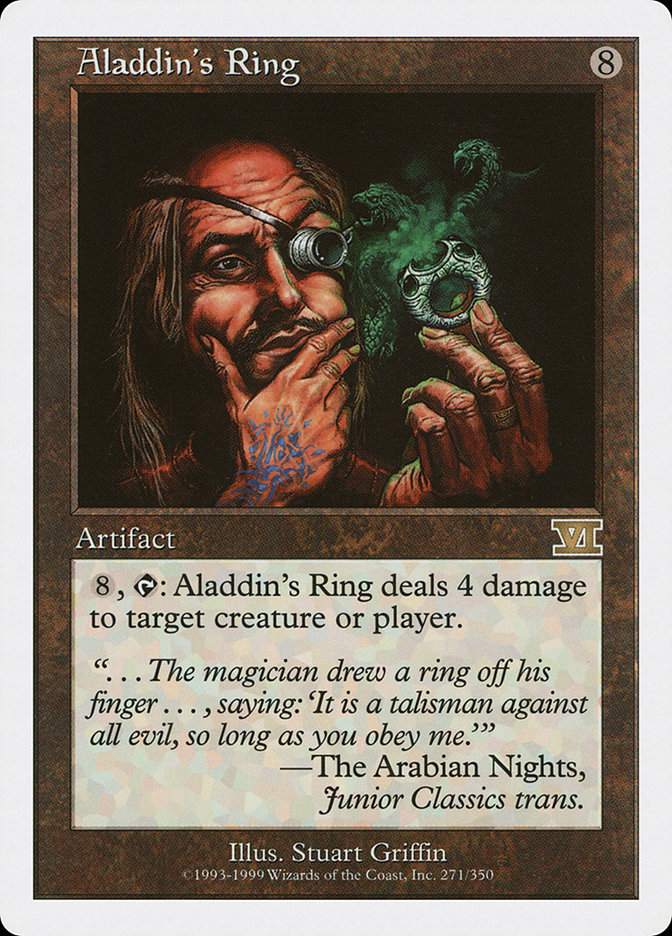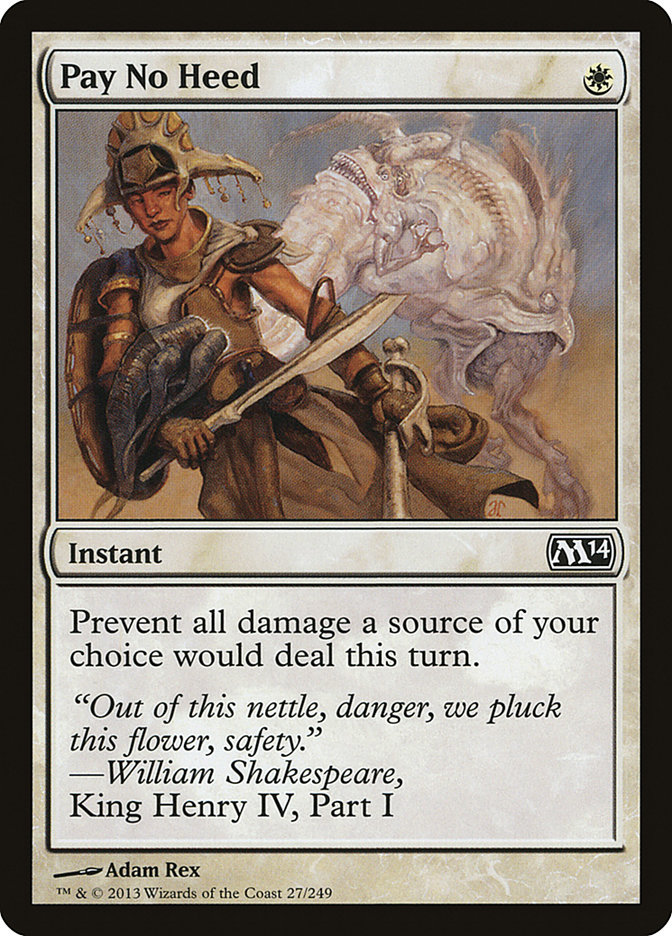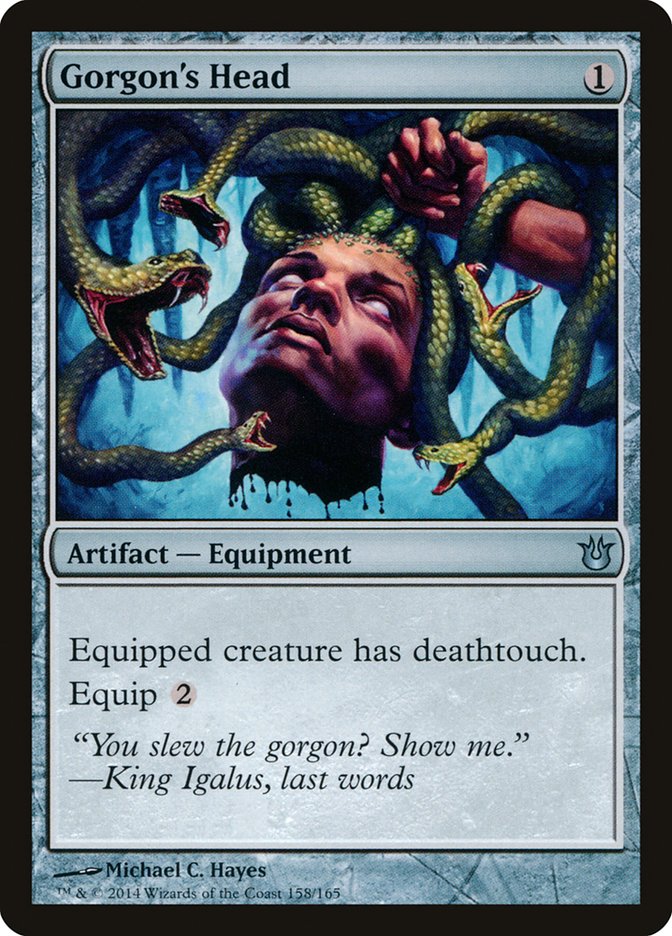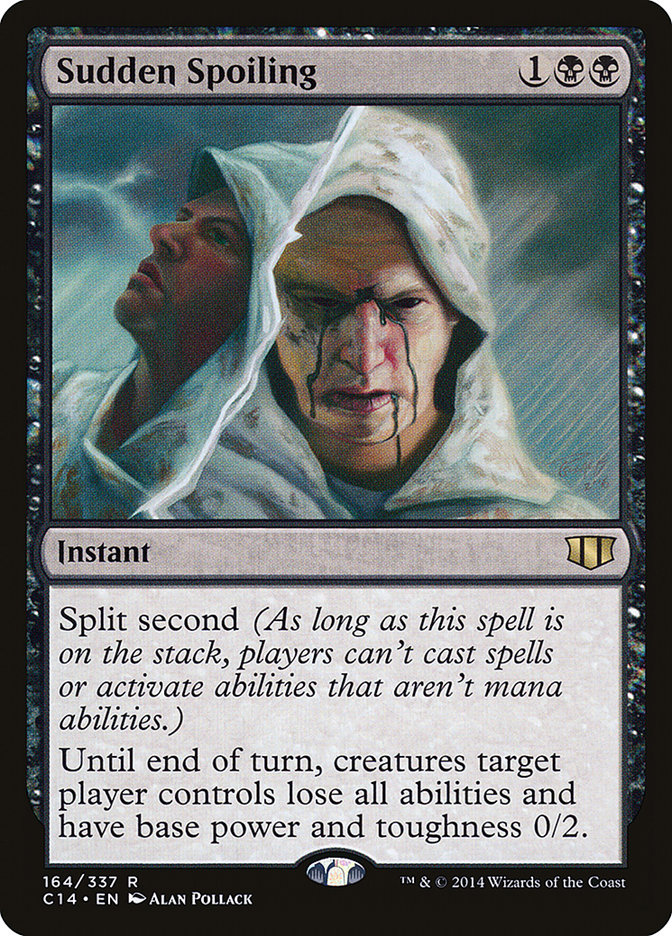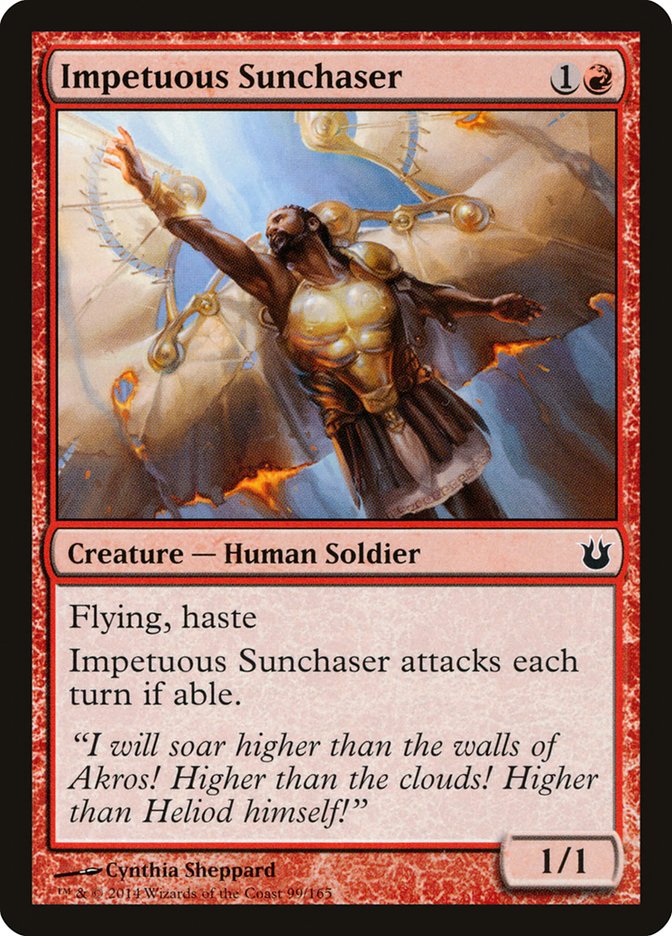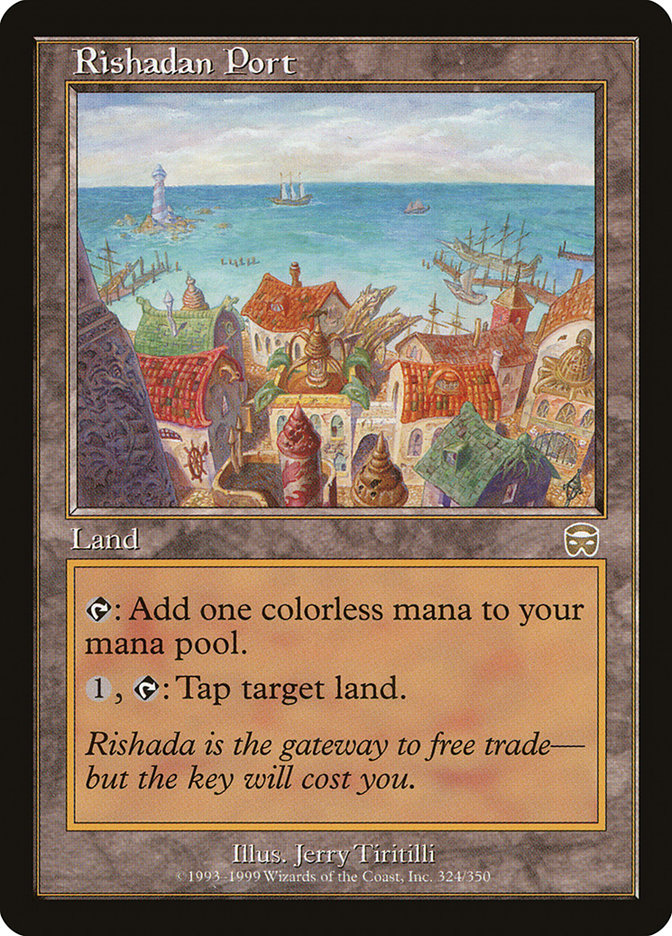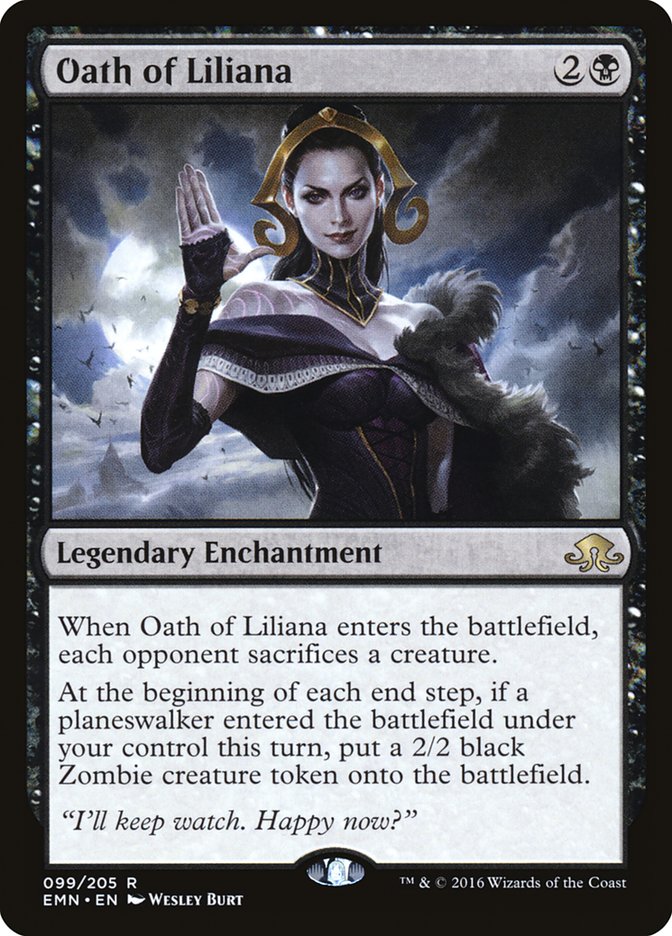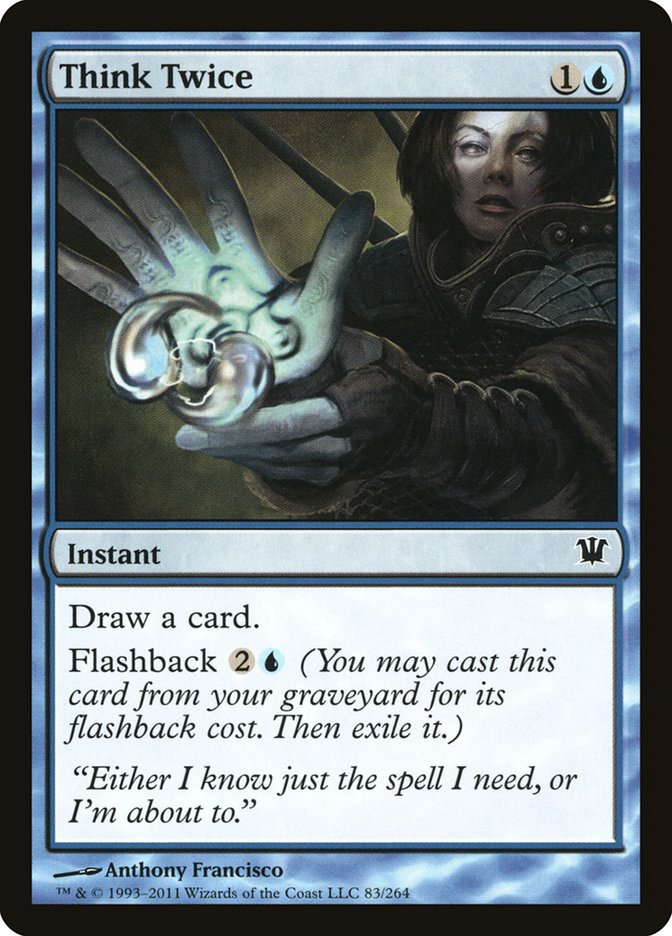In recent years Magic has scored flavorful hits with “X World” themes for planes. The original visit to “Gothic Horror World” Innistrad was a commercial and creative success; ditto the first trip to “City World” Ravnica. Both earned sequels as a result.
Theros block received a more polarized reaction, split between those who admired the plane’s reimagining of ancient Greek myth (as today’s players know it) and those who found the similarities between Theros and the source material so strong as to be grating. Commentators from several corners said, in effect, why not Poseidon instead of Thassa, God of the Sea? Why not Athens instead of Meletis?
Wizards of the Coast used to do just that, with the emphasis on “used to.” Two entire sets, Arabian Nights and Portal Three Kingdoms, are based on literature from outside the Western world: the story collection One Thousand and One Nights and the Romance of the Three Kingdoms, respectively.
But Wizards of the Coast no longer uses specific real-world references in its Magic sets; Magic 2014 with its two pieces of real-world flavor text was the end of an era. In its place is the reimagining, as I mentioned above, a passing through a filter of Magic’s past. It’s what turned the legends of Sparta (and the Colossus of Rhodes) into the polis and Colossus of Akros, and the Acrisius written about by Ovid in his Metamorphoses into the King Igalus on Gorgon’s Head.
Then and now.
To be sure, Wizards of the Coast still uses real-world inspirations for its fictional universes. It has to; a set completely cut off from any players’ pre-existing knowledge, without anything for players to relate to, would be a total disaster nobody could understand. (This is a partial explanation for the failure of Kamigawa, which de-emphasized familiar tropes such as Samurai and Ninja in favor of a “Shinto-gone-wrong” war between the physical world and its Spirits, leaving the vast majority of players scratching their heads.)
Because reimagining is a process, I can illustrate it using a piece of literature most of you have heard about (if not read), one that Wizards of the Coast is unlikely to adapt but could provide an interesting setting in its own way.
My target time: the early 1800s.
My destination: New England and all around the world.
My book: Moby-Dick.
And no, those pictures of Whales aren’t a spoiler. The Whale is the secondary title of Moby-Dick.
Even so…spoiler alert for the public-domain book that’s more than a century old, in case you don’t want to ruin your surprise.
Moby-Dick is a big sprawling book. I’m a literature lover, and even I found it tough sledding. (That’s enough about inaccurate whale lore, Melville; that’s enough about the color white, Melville.) The core of the story is clear, though.
Reimagined: Story
The narrator (“Call me Ishmael.”), looking for a change of pace, gets in bed with a Polynesian cannibal and then joins him on a whaling ship. The captain of said ship turns out to be the infamous Captain Ahab, who by force of will and a little monetary persuasion convinces the crew to go after one whale in particular: the albino or “white whale” Moby Dick, which cost Ahab his leg in a previous encounter. Despite a handful of dissenters holding the opinion that this is not logical, Ahab and the ship press on, revealing through a series of encounters with other ships the depth of Ahab’s hatred. Eventually Ahab spots Moby Dick, and in the subsequent encounter, everyone drowns but Ishmael, who clings to his cannibal friend’s coffin (long story) until he’s picked up by a passing ship.
In the reimagining process, a central character for a Magic block based on Moby-Dick leaps out: the single-minded captain, bent on vengeance. The uncompromising, obsessed captain embodies the destructive side of red in the color pie; to go back to Theros for an instant, I’m reminded of Impetuous Sunchaser.
We have a voyage on the sea, then, with a quest for vengeance. We have a ship shattered by the white whale, with all but one soul lost. And that one soul: what if, instead of a rescue by another ship, the lone survivor is saved by the ignition of a planeswalker spark? That could send into the Multiverse a calm and wise planeswalker who knows the perils of obsession (an Ishmael) … or, more frighteningly, a destructive force who will return and finish the job, one way or another (an Ahab).
Either way, we have a planeswalker origin story in the form of a sea tale. Awesome! Now let’s take a look at the setting.
Reimagined: Setting
Any Magic reimagination of Moby-Dick would of course spend a great deal of time at sea. Yet the land is also important.
While the sea and therefore Islands would have a strong influence on the whole look of the Moby-Dick plane, the whaling ships must set out from somewhere and come into port for repairs, selling cargo, exchanging crew, and so on. These ports offer an opportunity to showcase different parts of the world: estuaries as Swamps, flood plains as Plains, wooded areas near a river-mouth for a Forest, an extinct volcano in the distance for a Mountain.
And what of these communities? Some could be at the height of technology, using whale oil to power not just lights but wondrous machines (an idea already used by the video game Dishonored). Other settlements could be more rudimentary, though Wizards would as usual be really careful to avoid perpetuating negative stereotypes.
From simple camps little more than a collection of tents to marvelous cities built according to the principles of Federal architecture and plenty of other near-contemporaneous styles, the talented artists of Magic could build environments simultaneously evoking the early 1800s in New England and Magic, just as they did for 1700s Prussia and Magic with the plane of Innistrad.
One big switch-up that Magic would force on the setting: no guns. Yes, Portal Second Age did guns. No, this theoretical set won’t get any.
You’ll have to settle for crossbows and magic to go along with the harpoons that were still in use at the time.
But who would be wielding those crossbows, those harpoons, that magic?
Reimagined: People
The contemporary sensibilities of Wizards of the Coast would modify some aspects of Moby-Dick’s depiction of officers and crew. Arguably Herman Melville’s approach to racial matters was progressive for its day; the aforementioned Polynesian cannibal, Queequeg, certainly comes across better than most of the characters, showing skill and courage and selflessness to put others to shame.
On the other hand, there’s no way Wizards of the Coast would replicate some of the phenomena in Moby-Dick. All-male crew? Nope. A social structure where the captain and all his officers are white dudes from New England and every harpooner is from an “exotic” background? Let me think about that…no.
Humans at sea would be a full mix: young and old (just as they were on ships then — if you could do the work, you could go to sea); women and men and folk who answer to neither; and a variety of appearances and cultures and customs. To give an example, there might be a woman harpooner who uses a mix of strength, skill, and “aiming magic” to make her kills (and her reputation); she always signs onto voyages alongside her husband, a metalsmith born on a different continent.
Other sapient species might pop up on ships as well, such as an Elf harpooner, a Dwarf cook, or a Minotaur doctor-healer. Meanwhile, beneath the waves, there could be Merfolk united in opposition to these whaling expeditions (“The Whales are not yours to kill!”) and ready to drop a rogue wave on any ship that gets in their sights.
Speaking of the Merfolk, they could be aligned with Magic’s colors blue and green, much as the planeswalker Kiora is: blue for the sea, green for the sea life and the natural harmony of the oceans. Humans would also have a level of blue alignment for the sea, but there would also be elements of red (adventure) and black (amoral profit motive) among whaling crew. White would largely be associated with home and the land, the wondrous places of order that contrast with the wilder and less certain life on the water, though certain white elements (healing magic, the “law of the sea”) would also be present. Non-Humans would bring their traditional color identities onboard (the green Elf, the red Minotaur, and so on).
One question that would have to be answered about the Moby-Dick Magic block would be where the Gatewatch fits in, if it does. Until the tides of Magic storytelling shift again, at least one of the Gatewatch members (Gideon Jura, Jace Beleren, Liliana Vess, Chandra Nalaar, Nissa Revane) must be plugged into any Standard-legal setting’s core conflict.
Perhaps Jace investigates a mystery that leads him to our Ahab-like captain’s ship, though I’d like to see the mystery motif given a bit of a rest after Shadows over Innistrad. Perhaps Liliana figures out the ship’s voyage will take her to the remote home of one of her demonic contract-holders. Perhaps Nissa’s hanging out in a coastal forested area and helps the local Elves fight off rapacious whaling crews.
Or perhaps the Moby-Dick Magic setting is for a Conspiracy-like product, a one-off that doesn’t have to be tied into the main Gatewatch story.
Reimagined: Magic World Brainstorming
I’ll leave off the Moby-Dick Magic block worldbuilding for now. It’s still in the early stages, barely past brainstorming, but all the important parts are there: the intersection of the source material and Magic, the implications of putting magic into a setting, and how Wizards of the Coast’s commitment to diversity gets creators to consider choices they otherwise might have made unthinkingly.
Would you be excited to see a Magic setting based around a world like Moby-Dick? What other literary settings are ripe for adaptation?


